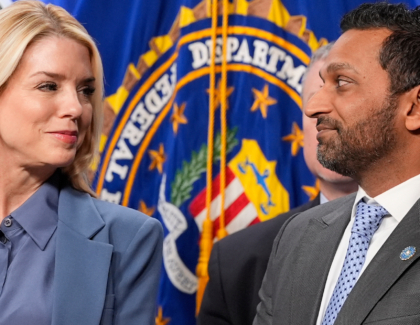Sign up for the daily CJR newsletter.
James Lardner deserves a loud shout-out for his piece about the movement—somewhat dormant until now—to make patients into consumers, meaning that they should pay more for their health insurance and be crackerjack shoppers to boot. That’s called “having more skin in the game” in the health care vernacular, meaning that if people have to pay more out-of-pocket, they will use fewer medical services, which will in turn reduce the nation’s overall tab. Lardner, who writes for the start-up news site Remapping Debate, looks at the issue through a different lens than most journos have so far.
The piece was well-reported with an interesting lede, letting readers know right off the bat that the vote in the House of Representatives was a breakthrough for the “skin in the game” school of health policy. A voucher system for Medicare, which is what Ryan’s plan calls for, will indeed give them more skin. It will make them pay more out-of-pocket for their health care. Lardner provided plenty of background, so readers could understand where proposals for turning patients into consumers came from. According to Lardner’s reporting, it all stems from the free-market think tanks—the Hoover Institutions, the Heritages, the Catos—that have been preaching for years that when patients have more personal dollars at stake, they will make smarter choices and doctors and hospitals will compete harder and be more innovative. Somehow in this process care will improve and costs will come down.
But wait a minute. Didn’t a big study from the RAND Corp., a reputable source on these matters, just find some big downsides to this approach? Yes, said Lardner, and zoomed into the RAND study, which Campaign Desk pointed out was missed by virtually all mainstream journalists. I asked one health reporter why she didn’t write about the study; she replied that there wasn’t any news in it. The conclusions were to be expected. By whom? And what were those conclusions?
Lardner, however, understood the significance of the RAND study. He reported that when patients had so-called consumer-driven insurance policies, which are characterized by high deductibles and other cost-sharing by patients, they tended to “economize on doctor visits and medicines that would cost them money out of pocket.” Lardner actually talked to one of the researchers who told him that the results of the study were “not ideal.” People were skimping on the preventive tests even though many had insurance that covered them. One theory: If patients are skipping doctor visits, then they don’t hear doctors recommend preventive tests, which they often do. Researchers examined medical claims from 800,000 families, a very large sample, which made the results so compelling.
Lardner did what good medical journalists should do—that is, put his story in the context of other similar studies on the topic. He gave his story gravitas when he examined a claim that the skin-in-the-game believers cite—ironically, an old RAND study that showed if patients had to pay more, their health did not suffer. He interviewed Shannon Brownlee, who wrote an important book called Overtreated: Why Too Much Medicine Is Making Us Sicker and Poorer. Brownlee made a crucial point about the earlier study. People were more judicious about spending money on health care, she said. “But they didn’t do it in a rational way. They were just as likely to forego care that they needed as care that they didn’t need. So they weren’t really very prudent consumers of health care. They were simply more worried about spending money on health care.”
As I have written before, buying health care is not like buying canned peaches, even though supporters of that notion continue to make the world think it is. A few years ago, I interviewed a marketer by the name of Vince Perry. “Selling health care is different from selling consumer goods,” he told me. “When people are sick, they don’t celebrate the buying process. There’s no celebration in sickness.” Lardner’s story makes that point with comments from other experts.
The wisdom of the pack—of journalists, that is—has decreed that this story is off limits for whatever reason. Lardner moves way beyond the “he said/she said” paradigm and shows what a little basic and original reporting can do to make a piece zing. Perhaps he will be the leader of a new pack that actually pays attention to this issue.
Has America ever needed a media defender more than now? Help us by joining CJR today.






